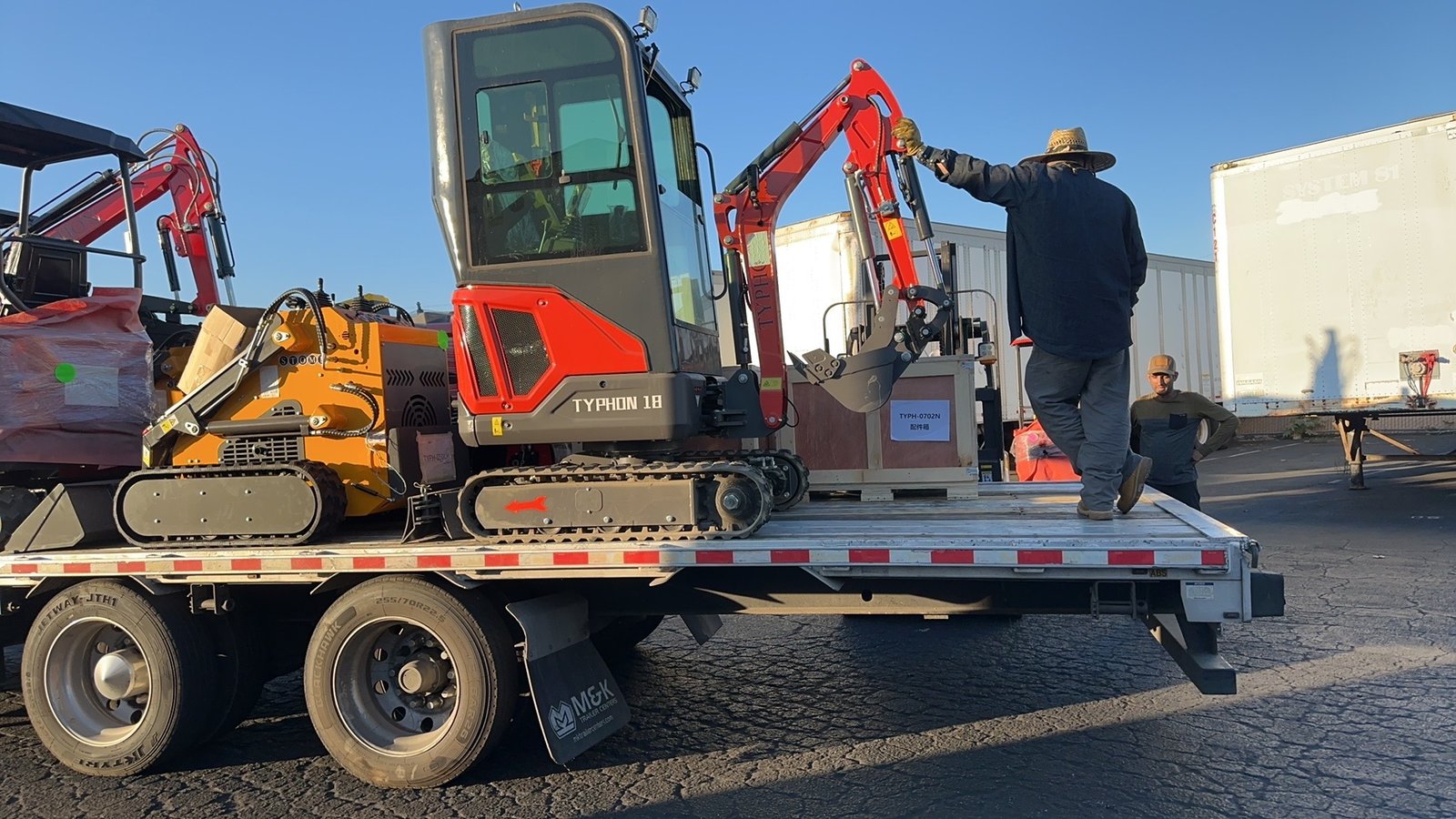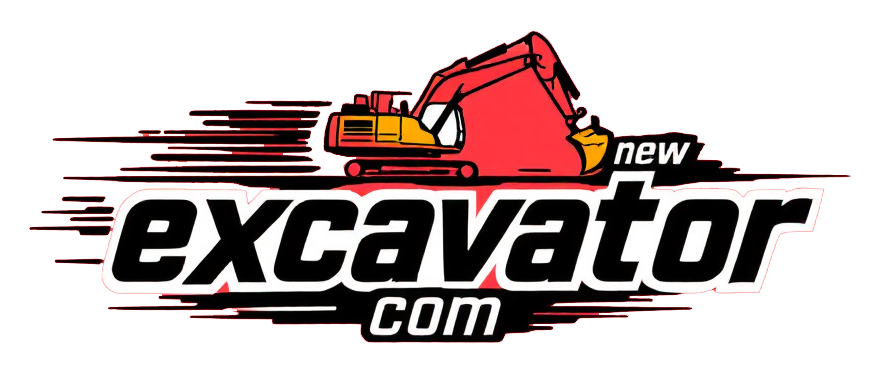
Understanding Operating Capacity
Operating capacity is a basic concept in the field of building equipment, particularly in relation to mini excavators. This word essentially characterizes the maximum weight a machine can safely handle while still being stable and effective. Knowing operational capacity for mini excavators ensures that the equipment is used within its safe working range, therefore minimizing accidents and increasing on-site efficiency.
One can find the operational capacity by precisely calculating the lifting and carrying capability of a mini excavator. Manufacturers often provide this information, which consists of the maximum weight the machine can lift at various angles and at multiple boom extension points. This indication helps operators to clearly understand the limits of their equipment under different working conditions. Overstepping these limits could lead to structural damage, tipping, or wear and tear—all of which compromise the longevity and safety of the equipment.
Moreover, the relevance of operational competency affects project design and implementation. Understanding the running capacity of a mini-excavator, for instance, assists project managers to distribute the suitable equipment for specific activities, therefore optimizing the workflow and guaranteeing timely project completion. For projects involving more loads, for example, a mini excavator with an operational capacity of 2,000 pounds could require either another piece of equipment or a machine with a larger capacity.
In this sense, comparing the operating capabilities of several machines helps one to gain rather clear knowledge. Although a more modest excavator could have an operational capacity in the lower thousands of pounds, its sturdy structure and enhanced mechanical reach enable a larger excavator to handle astonishingly higher weights. This difference highlights the significance of choosing the right excavator depending on the specific requirements of the work rather than a one-size-fits-all approach.
In essence, thorough understanding of operational capacity not only guards against prospective hazards but also is highly crucial for maintaining operational effectiveness and project success. Effective and safe building methods largely rely on the operating capacity of small excavators, which is attained by intentional application and clear knowledge.
Defining Lifting Capacity
Understanding the lifting capacity concept will help one to analyze the capability of a mini excavator. The weight an equipment component can safely carry and elevate is its lifting capacity. Mini excavators allow numerous mechanical and situational factors to influence this measurement. Close inspection of these components enables one to assess the running efficiency and safety of these devices.
The lifting capacity of a mini excavator is mostly determined by its hydraulic power. Big weight raising requires force generation, which is under control of the hydraulic system. Thus, the capacity of this system to properly carry out lifting operations directly corresponds with the strength and efficiency of the machine. Maintenance of a hydraulic system determines its dependability in lifting capability.
Still another crucial element is the length of the boom. The boom acts as a lever; physics says that the more work is required to raise a given weight, the longer the lever is. The boom length consequently has a significant effect on the mini excavator’s lifting capacity. Usually lowering the capacity, a longer boom requires for careful balancing reach and lifting needs depending on specific project requirements.
Mini excavator lifting capacity also greatly relies on weight distribution. Correct weight distribution helps to preserve machine stability, so allowing it to lift more weight without tipping over. Every mini excavator has a load chart with thorough details on how weight and distance from the center of rotation influence its lifting restrictions.
Practically speaking, whether managing tasks including moving building materials, hauling pipes, or installing large machine accessories, lifting capacity takes front stage. For instance, a small excavator could be required to move large rocks or steel beams during building operations. Maintaining safety standards and operating efficiency rely on the equipment running within its lifting capability.
Comparison of Lifting and Operating Capacity
For those running mini-excavators, understanding the differences in operating and lifting capacity is crucial. The effective and safe running of this machinery rely significantly on these qualities. Lifting capacity is the utmost load the mini excavator can handle when the boom is totally extended at its highest position. It takes structural strength, hydraulic power, and machine stability among other things. Conversely, operating capacity provides a comprehensive evaluation of the excavator’s efficiency on a project site by including its overall performance in view of elements including digging power, swing torque, and travel speed.
Imagine practical scenarios that demonstrate the need of these skills. Knowing the lifting capacity, for example, assures the mini excavator can handle large materials like concrete pipes without stressing its hydraulic system too much or toppling over. Conversely, operating capacity indicates the speed and efficiency with which the excavator might dig and transport dirt when earth-moving tasks take front stage.
Knowing both capacity lets operators choose the appropriate machine for different jobs, therefore enhancing output and safety. For projects requiring significant lifting, say a mini excavator with high lifting capability; for digging and transporting a lot of earth, one with tremendous working capacity would be used.
Below is a table comparing the lifting and operating capacities of different mini excavator models:
| Model | Lifting Capacity (kg) | Operating Capacity (kg) |
|---|---|---|
| Model A | 1,200 | 900 |
| Model B | 1,500 | 1,200 |
| Model C | 1,000 | 800 |
The above comparison showcases how different models vary significantly in their lifting and operating capacities. It highlights the need to evaluate both metrics comprehensively when selecting a mini excavator for any project.
Factors Affecting Lifting Capacity of Mini Excavators
Several important elements operators must take into account for best performance affect the lifting capacity of a mini excavator. Among the main elements is the kind of topography. Sloped, uneven, or unstable ground can seriously affect the balance and stability of the excavator, therefore lowering its lifting capacity. Ensuring that the mini excavator can reach its optimum lifting potential depends on it operating on firm and level ground.
An other crucial consideration is the machine’s condition itself. Maintaining the lifting efficiency of the machine largely depends on structural integrity evaluations, hydraulic system inspections, and regular maintenance encompassing lubrication of moving parts. Low hydraulic fluid levels or worn-out parts can greatly restrict the excavator’s capacity to raise big loads.
One further has to consider attachment weight. The weight overall consists in the load as well as any buckets or attachments used. More attachments mean the machine has less capacity to raise extra weight. One must select the appropriate attachments that balance weight problems with usefulness to maximize the capabilities of the small excavator.
Furthermore highly influencing lifting capacity is the boom and arm configuration. Different designs can affect the leverage and reach of the arm, therefore affecting the weight the excavator can hoist. Correct setup for the current job will maximize efficiency and safety.
One cannot stress, at last, the hydraulic system’s performance. Strong hydraulic systems ensure the necessary power for the little excavator to manage big lifting operations. Lifting capacity will be much enhanced by keeping hydraulic systems in perfect condition by frequent inspections and fast leak or pressure problem resolution.
All things considered, knowledge and control of these factors will enable small excavator operators to maximize their lifting capacity, therefore ensuring effectiveness and safety on the job site. Safely maximizing the lifting capacity largely depends on good terrain management, careful choice of attachment, careful maintenance of an efficient hydraulic system, and so on.
Safety Considerations When Operating Mini Excavators
Using mini excavators demands a great focus on safety, especially in connection to heavy loads. One of the important elements is how one interprets and applies the load chart. The load chart provides crucial data on the lifting capabilities of the little excavator in numerous configurations. Following load chart guidelines ensures that the equipment is not under needless strain, so avoiding possible mistakes.
Correct setup is another crucial consideration when running mini excavators. This means ensuring that under running conditions the equipment is situated on stable, level ground to prevent tipping or shifting. Furthermore necessary to lower the risk of damage is the erection of signs or barriers in the operational area to keep unlawful users off.
One cannot emphasize the significance of consistent equipment check. Before beginning any operation, an operator should completely inspect the mini excavator. Examining hydraulic systems, looking for any evident damage, and ensuring all safety systems and controls are running as they should all help with this. Moreover, manufacturer advised regular maintenance should be undertaken to extend the life of the apparatus and maintain operational safety.
Similarly important is operator direction. Every operator should be obliged to finish a comprehensive education covering the functionality, control systems, and equipment emergency procedures. This guidance should coincide with the guidelines established by respectable organizations such as OSHA. OSHA’s policies and guidelines give operators’ understanding of the safe handling and running of small excavators a framework.
At last, adopting specific safety rules—such as those defined by OSHA—helps to improve the general safety of mini-excavator operations. OSHA regulations include load-handling techniques, personal protection equipment (PPE), and emergency response systems. By including these technologies into daily operations, lifting activities’ safety and efficiency are enhanced and the likelihood of mistakes is much reduced.
Choosing the Right Mini Excavator for Your Needs
Choosing the right mini excavator for your particular lifting requirements calls for careful assessment of many criteria. A methodical approach will guarantee that the equipment you select fits your project needs considering the great range of models and features. This is a checklist meant to help you with this process:
Lifting and Operating Capacities: Start by figuring out your required maximum lifting capacity for your jobs. Mini excavators come in several lifting ranges; your pick should reflect the heaviest loads you expect. Furthermore take into account the machine’s running weight since it affects stability and maneuverability especially on uneven ground.
Job Site Requirements: Examine the physical limitations and conditions of your work place. For limited areas, compact excavators are perfect; but, particular versions provide improved reach and maneuverability. To be sure the little excavator you select can deftly negotiate and operate within the constraints of your project site, evaluate the depth, reach, and swing radius.
Budget: Your choice will unavoidably be influenced by your budget. Although more expensive models have sophisticated tools and more lifting capacity, many mid-range mini excavators have enough performance at a reduced price. Calculate the cost-benefit ratio of several models considering future maintenance and running needs.
Brand Reliability: Still another important consideration is the brand’s dependability. Investigate reputable producers of sturdy and effective mini excavators. Search for user evaluations, warranties, and after-sales assistance to have a whole picture of the market standing of the brand.
Popular models include the Bobcat E35, Kubota U17, and Caterpillar 301.7D CR provide respectable performance and dependability over many budgets and lifting capacities for people looking for recommendations. Aligning your choice criteria with these criteria will help you to find the small excavator that best fits your demands whether your need is for a machine for minor landscaping chores or more demanding construction activities.
